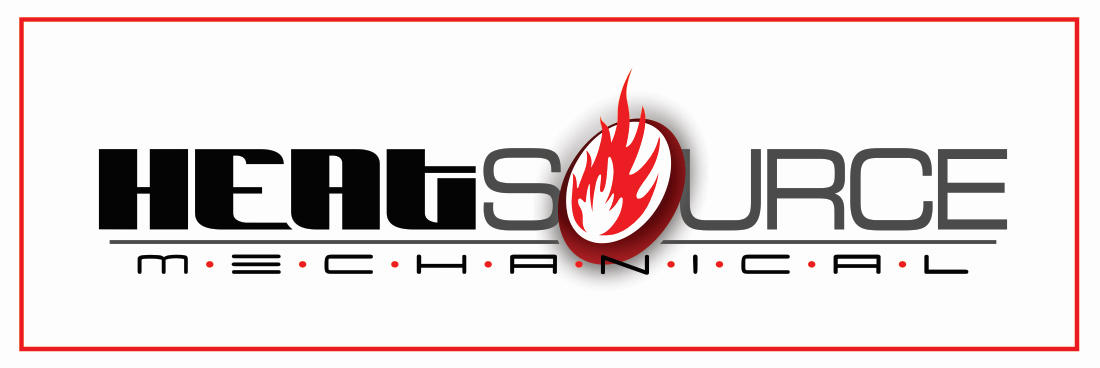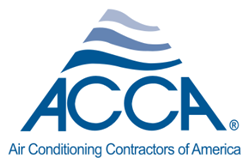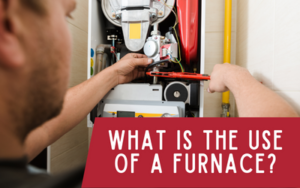A pilot light is the small blue flame that ignites the burner in your furnace. Most newer furnaces have electric starters, rather than pilot lights, but they’re common in older systems. If your pilot light goes out, we highly recommend checking your furnace’s owner’s manual and following the manufacturer’s instructions. But here are a few tips on how to re-light your pilot light should it ever get snuffed.
It’s important to note one thing first: If you detect a strong smell of natural gas, do not attempt to light the pilot. Instead, leave the house and call Enstar or 911.
Step 1: Turn Off the Gas Valve
Most furnaces have a control panel near the bottom with a gas valve that has on, off, and pilot settings. Turn the valve off and wait at least three minutes. It’s crucial that you don’t skip this step because turning the valve off stops incoming gas flow, but it does not stop the gas that was already emitted. Waiting a few minutes before going to the next step allows the gas dissipate.
Step 2: Light the Pilot Light
Now you can switch the valve to the pilot setting. Near the valve, you will see a reset button. Hold a lit match to the pilot opening while you push the reset button on the control panel. Keep holding the button until the pilot flame burns brightly, then release the button. The flame should stay lit.
Step 3: Turn Your Furnace Back On
Lastly, set the valve to the on position. The furnace should start automatically.
If your pilot light won’t stay lit, it’s possible the opening is clogged. To fix this, turn the gas valve off and clean the opening with a piece of fine wire. If it still won’t stay lit after several attempts, you may have a faulty thermocouple.
If this sounds like a job you would rather not attempt, or you just need a little help along the way, call a professional heating service to assist you. If you have a furnace with a pilot light, we suggest you have it checked from time to time to keep it running. The older the furnace, the more frequently it needs to be checked.
Need a little help? Call the team at HeatSource Mechanical.
Furnace Technology is Changing
Older gas furnaces rely on pilot lights, but newer models use electric ignition systems that are much more efficient. Why did this change happen?
The answer is simple: a pilot light requires a continuous supply of natural gas to keep it burning through the winter. The pilot light has to be burning all the time during the heating season so it ignites the gas from the burners when they turn on. This isn’t an enormous natural gas expenditure, but cumulatively it raises your utility bills and lowers the energy efficiency of the furnace.
On the other hand, electronic ignition systems require little power to work. Some electronic ignition systems still use a pilot flame to ignite the gas burners, but the ignition only needs to turn on and use power for a short time before it shuts off. This is one of the reasons newer furnaces have higher energy efficiency ratings than older furnace types.
Many Wasilla homes may have a furnace that still uses a pilot light. If this is the case, we recommend considering having a new furnace installed—and not just because of the pilot light. Chances are the furnace is probably getting up in years and it’s about time to replace it. We generally recommend looking into a furnace replacement every 15-20 years.
Considering replacing your furnace? Check out our Comfort Club Membership for special offers throughout the year.
How Has Furnace Technology Changed?
Since the days of the wood stove, the furnace has been central to keeping a home comfortable and livable. Things are certainly a lot more advanced now than they were when furnace technology got started. One thing remains the same, though: you burn fuel to make heat then get a big blower to move it around your duct system. The differences lie in what kind of energy is used to create the heat, how much heat is produced, and how it’s distributed throughout your house.
When you think of the term “furnace” you probably think of the system running on natural gas. This isn’t always the case. We’ve run through the four types of fuel systems below to help you familiarize yourself with the different fuel source options.
Natural Gas
Gas furnaces are the most common type of fueling system across southcentral Alaska. Gas furnaces, particularly the newer models, are high efficiency so they can save you money on your heating bills. They’re also quiet and fast in addition to their fuel efficiency.
Electric
If you don’t opt for a natural gas furnace, it’s more than likely that you’ll get an electric furnace for your home. Truth be told, electric furnaces aren’t always best for our cold Alaskan weather. Generating heat through the process of electricity is a labor-intensive process that ends up costing more money.
Oil
Oil furnaces are some of the least common. Oil furnaces require heating oil to operate, which gets delivered to your home from a local company on a routine basis. If you’re one of the few homeowners who still run their furnace on oil, we would encourage you to switch to a furnace that’s easier on the earth and easier on your wallet.
Propane
Similar to oil, houses using propane need to have a storage tank installed and arrange for delivery of the propane gas to the main tank on a regular basis. Propane fueled heaters work in the same way as gas heaters. One advantage of propane is that because it is stored, it can be purchased ahead of the winter months at lower prices.
Ready to make a change? View our range.
Single-Stage, Double-Stage, and Variable-Speed Furnaces
Furnaces are a long-term investment, so you want to make sure that you’re buying the ideal heating equipment for your home. This is based on a number of factors, including heating requirements, existing ductwork and insulation, size and levels of your home, and budget.
There are three types of furnaces available on the market today.
Single-Stage Furnace
A single stage furnace has only one setting—high. So whenever it’s operating, it’s running at full capacity, no matter how cold it is outside. Because of this, a single stage furnace is not as efficient as other options. Single-stage furnaces do however cost less, are less likely to break, and have low repair costs.
Double-Stage Furnace
A double stage furnace has two levels of output—high and low. Most of the time a double-stage furnace runs on the low setting and only kicks into high gear in really cold weather. These furnaces are moderately priced, not likely to break, and have average repair costs.
Variable-Speed Furnace
Variable-speed furnaces use advanced technology that causes the blower motor to operate at different speeds, which allows it to more accurately control the flow of heated air to your home. These furnaces do cost more than other options and could require more repairs, but they run much more efficiently than a single-stage or double-stage furnace, saving you money and energy in the long run.
What Furnace Do We Recommend?
Chances are if you are reading up on furnace technology, it’s because you are in the market for a new furnace. HeatSource is a Lennox Premier Dealer and we recommend Lennox Systems for Alaskan homes because of their quality and efficiency.
We offer a range of Lennox furnaces that will conserve energy and save you money. Every home is unique, which is why there are several models to pick from to ensure you get the right fit. Not only can Lennox furnaces maintain your home comfort needs, but they also help with air filtration and humidity control. Both of which help to increase the air quality in your home!
Our experienced technicians can advise you on which unit is the best one for the size of your home and your family’s needs. Contact our qualified team today.













